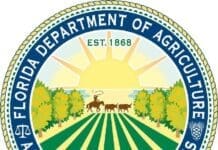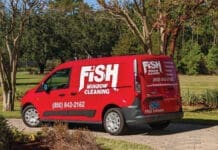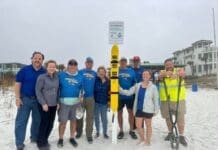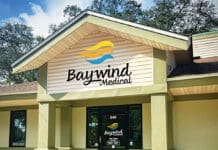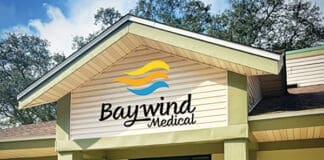Hurricane season along the Gulf Coast is June 1 through November 30, meaning we are not even half way through yet. It’s been a quiet storm season due to a cloud of Saharan dust bringing dry air that has stifled tropical activity so far. But, in the coming weeks, experts expect tropical activity will ramp up. Nicole Carlisle, a meteorologist with the National Weather Service, said “With the dust making its way out, conditions are ripe for storms to erupt. I would say that it’s the quiet times, like now, that it’s a good time to review your hurricane plan.” If you are like a lot of folks living along the coast, you might not have completed your preparations, but it’s not too late. Get supplies now, because late August and September are peak hurricane season months when 90% of tropical storm activity occurs.
First, let’s look at preparing your home. Keeping up with regular maintenance is a great head start! Keeping your gutters cleared out, trimming tree branches and shrubs away from the house, and removing dead branches are important tasks all year, but especially when high winds and rains can cause debris to damage your home. Make sure you have proper materials to board up or shutter your windows ahead of an advancing storm and know how to secure them to the house. When a storm is approaching, make sure to bring in loose patio items such as chairs and tables so they don’t fly around and cause damage. Secure all the doors on your home, keeping in mind that the garage door is often the most vulnerable. Finally move your vehicle inside the garage or another secure location. Home protection includes making sure your insurance is up to date with replacement costs and flood protection. Having a video of your home inside and out will help if you need to make a claim; it is often difficult in the aftermath of a storm to remember everything you have. Written records of make, model serial numbers of appliances and electronics can assist if you need to replace any of them. Take a moment to find out what your insurance company requires for storm preparation to make sure you are covered from loss. Keep copies of your policy in your emergency kit and if possible, store on the cloud so you have access, should the originals be destroyed.
Being prepared for an emergency isn’t just about staying safe during a storm. It’s also about how to stay comfortable, clean, fed and healthy in the aftermath. A severe storm may have knocked out electricity, disrupted water and sewer service, and limited access to and from your home or business. If the power is out, you might be unable to go to the store or the bank. Being prepared means having your own food, water, cash and other supplies to last for at least three days, and possibly longer if you are in a remote or hard-to-reach area. Remember that your kit will depend on your own needs. An emergency supply kit is a good idea to have on hand whether you need to evacuate or are able to shelter in place. The National Weather Service and NOAA at https://www.weather.gov/safety/hurricane-and their counterpart Ready.gov suggest the list below to get started:
• Water—at least a gallon per person, per day
• Non-perishable food (such as dried fruit, peanut butter, or energy bars) with a manual can opener
• First aid kit and Prescription medicines including eye glasses and or contacts with solution
• Flashlights, Battery-powered or hand-cranked radio, with extra batteries or an alternative power source
• Matches in a waterproof container
• Toothbrush, toothpaste, soap
• Paper plates, plastic cups and utensils, paper towels
• Sleeping bag or warm blanket for each person
• Whistle to signal for help
• Local maps
• Dust mask (to help filter contaminated air)
• Plastic sheeting and duct tape (to shelter in place)
• Moist towelettes, garbage bags and plastic ties (for personal sanitation)
• Wrench or pliers (to turn off utilities)
• Cell phone with chargers and a backup battery
• Baby supplies (formula, diapers, etc.)
• Important family documents such as copies of insurance policies, identification and bank account records saved electronically or in a waterproof, portable container, and don’t forget CASH.
Stay aware of the weather with local news channels on the radio, television and reliable social media outlets. You can access mobile.weather.gov on your mobile device and get Wireless Emergency Alerts.
Okaloosa County’s Public Safety has great resources which provide evacuation routes, zones, shelters and Emergency Broadcast stations. You can find that information at https://myokaloosa.com/ps/home
Typically, there is some warning with Hurricanes. However, Hurricane Michael in the fall of 2018, turned from an expected Cat. 2 to a Cat 5 within two days. Being prepared well ahead of time helps you and our community when situations place a heavy demand upon limited supplies. Keeping your gas tank at least half full is a good idea as there are often short supplies and long lines during a storm. Let’s work together to keep each other safe and prepared. If you are all storm ready, please check on an elderly or disabled neighbor to make sure they are as prepared as possible. Share your preparations and survival tips with me at Facebook.com/DestinFWBRealtor.



